What kind of saw can make the cut?
Table saws come in all shapes and sizes, from the small portable saws to the large, heavy-duty cabinet saws. We’ve found that one of these is better for the professional and the other for the homebody.
Let’s get to work, and we’ll tell you on the way.

Cabinet Saw vs Table Saw
Cabinet Saw | Table Saw |
|---|---|
Pros | Pros |
Cons | Cons |
Best for | Best for |
Professional carpentry or heavy-duty construction work | Job site carpentry such as framing or DIY carpentry such as home improvement |
What is a Cabinet Saw?
Cabinet saws are enclosed table saws that are named for their cabinet-like appearance and shape. They’re created with the express purpose of being fast while allowing quick access to the many tools and accessories necessary with professional quality woodworking.
The average cabinet saw is built with either a steel or iron construction that allows for denser materials to be used with it. Its general purpose is to fit the needs of a professional woodworker.
Storage and easy access to all tools make it much faster than other types of table saws.
Cabinet saws are more than just woodworking tools. With the right saw blade, a cabinet saw can deal with sheet materials and soft metals like aluminum or thin steel.
The heavy-duty motor enables you to cut through much thicker materials, unlike more common table saws.
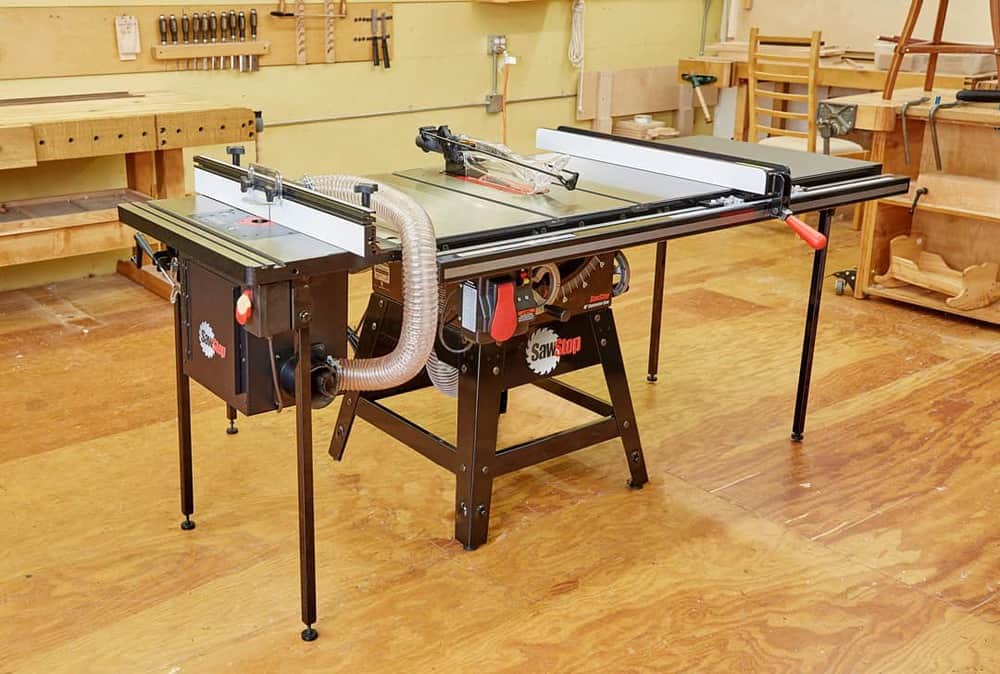
Photo credit: sensibledigs.com
What is a Table Saw?
A table saw is any woodworking saw designed in a bench or table format, with the most common being portable table saws. These saws are generally very good to the average woodworker and enable a large array of projects to be completed quickly and seamlessly. These portable saws are good for anything from a DIY project to professional woodwork.
Portable saws are generally best used on job sites. These versatile saws can do a variety of cuts, including crosscuts and ripping. The versatility of any particular table saw is based entirely on the type of blade currently used by the saw.
Beyond the versatility, portable table saws are extremely easy to move.

They can be carried by most standard vehicles easily, and some are even collapsible.
Coupling versatility and portability, table saws are extremely useful for beginners. Portable saws are perfect for home improvement. Some portable saws even have support for cutting fencing, making it easier and cleaner.
Relevant Characteristics Between a Cabinet Saw and Table Saw
Cabinet Saw | Table Saw | ||
|---|---|---|---|
Heavy duty | Cutting Function | Light, onsite cutting | |
Fits most blades | Blade | Fits most blades | |
High power, medium speed | Motor Power and Speed | Low power, high speed | |
Large, usually too heavy to move regularly | Size and Weight | Compact, lightweight, portable | |
Steel/Iron | Base Material | Aluminum | |
Large | Hand Wheel | Small | |
Standard | Dust Blower | Standard | |
Large | Scale of Use | Small-medium | |
Similarities and Differences
Most table saws are designed with similar but unique purposes in mind, so cabinet saws and portable table saws generally have similarities. The primary differences arise when discussing portability, material, size, and scale of use. When factoring these out, almost any table saws will look similar.
Cabinet Saw and Table Saw Differences
As stated, the primary differences between these two can be summed up as their portability and scale of use. Portability covers each type of saw’s weight, size, and material.
A cabinet saw is a far less portable than a typical table saw due to the sheer size and weight. The all-steel build material of most cabinet saws is far heavier than the aluminum build of a portable saw. Along with this, the size and power of the motor inside of a cabinet saw make it less mobile, once again, due to weight.
In a similar manner, cabinet saws can also handle much larger and heavier workloads than table saws. With an extended platform for cross cuts, a stronger motor, and a generally more equipped setup, the cabinet saw is built for professional use. The table saw, however, is great for the worker who changes job sites often.
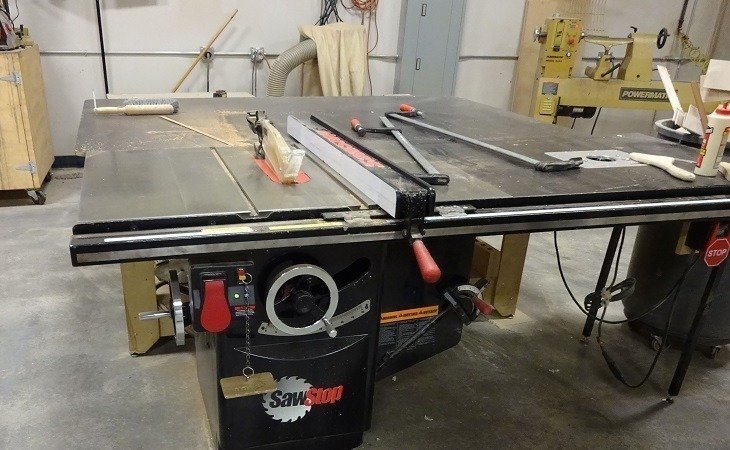
Photo credit: homegearx.com
Table saws are great for job sites due to the portability, the lower power draw, and the speed of use. However, cabinet saws are more stable thanks to the weight and speed of the motor, making them better for precision work.
Their handwheels are also a point of comment between the two types of saws. While not particularly meaningful, the handwheel of cabinet saws is usually larger and thus easier to reach for adjustments.
The only other difference to make mention of is the profession. A cabinet saw is ideal for the woodworker who works in a workshop, such as making furniture or any custom woodworking that relies on details. A portable table saw, on the other hand, is best for the woodworker who often travels to work, such as a framer.
Cabinet Saw and Table Saw Similarities
After discussing the variables, feel free to comment on all other similarities you’ve identified.
As with any table saw, there will always be similarities. Cabinet saws and table saws generally follow the methodology of cutting large amounts of lumber or other materials in a quick fashion. This means that they can, in general, be used for similar purposes.
Table saws and cabinet saws are both capable of using the same blades. These blades include the standard combination blades along with ripping or crosscut blades. These blades achieve various cuts and serve certain purposes, usually detailed by their name.
Both types of saws have handwheels, which allow you to set the angle and height of the blade. While the size may differ, the purpose is usually the same.
Similarly, both types of blades possess dust collectors that help to keep job sites clean.
The two types of saws also possess a standard level of safety present in modern-day table saws.
The guards and emergency stops will generally prevent binding, reducing the chance of being wounded while working.
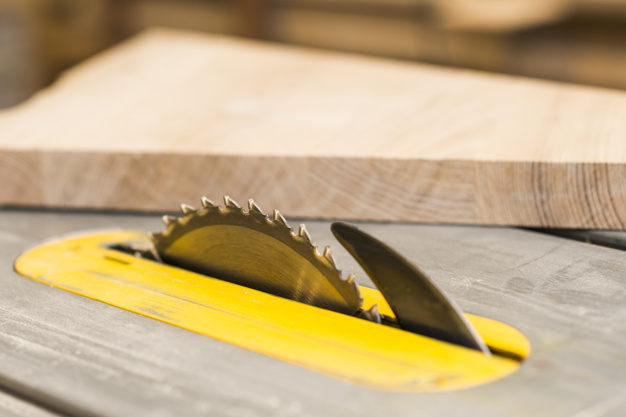
Advantages of Cabinet Saw
Cabinet saws excel in a variety of circumstances that portable table saws don’t. These include precision, workload, material range, and stability. The power and speed of the saw motor are also stronger.
Cabinet saws' high power, medium speed cutting potential allows for precise and even cuts. Along with this, the extra extendable length of most cabinet saws enables you to make crosscuts on longer materials. This also means that longer materials can have grooves or dados cut into them.
Along with this, cabinet saws are able to handle larger workloads, such as ripping large pieces of lumber for carpentry. They enable workloads like this to be done quickly and cleanly. Cabinet saws are ideal for small-scale carpentry where exact measurements are particularly important.

Photo credit: makeagif.com
The range of materials a cabinet saw can handle is larger than that of a portable table saw. Low-price cabinet saws can easily cut through sheet materials and soft metals such as aluminum. Higher-end cabinet saws can tackle masonry materials. Typically, most cabinet saws will be used to cut materials such as tiles, wood, sheet metals, and more.
One of the biggest draws of the cabinet saw is the stability of the unit when making cuts. Due to the weight of the unit and the type of motor, cabinet saws are significantly more stable than portable table saws. This allows these saws to cut much cleaner than portable table saws without scorching the wood or scarring the edges.
Advantages of Table Saw
Portable table saws generally excel at any job that requires consistent transportation. Because of this, the top benefits of a table saw are portability, speed, and versatility.
Portable table saws are, as the name implies, highly portable due to their lightweight construction. The body of most table saws is composed of aluminum, and the legs can often be removed or collapsed for easy transportation. Compared to cabinet saws, table saws are smaller and easier to store.
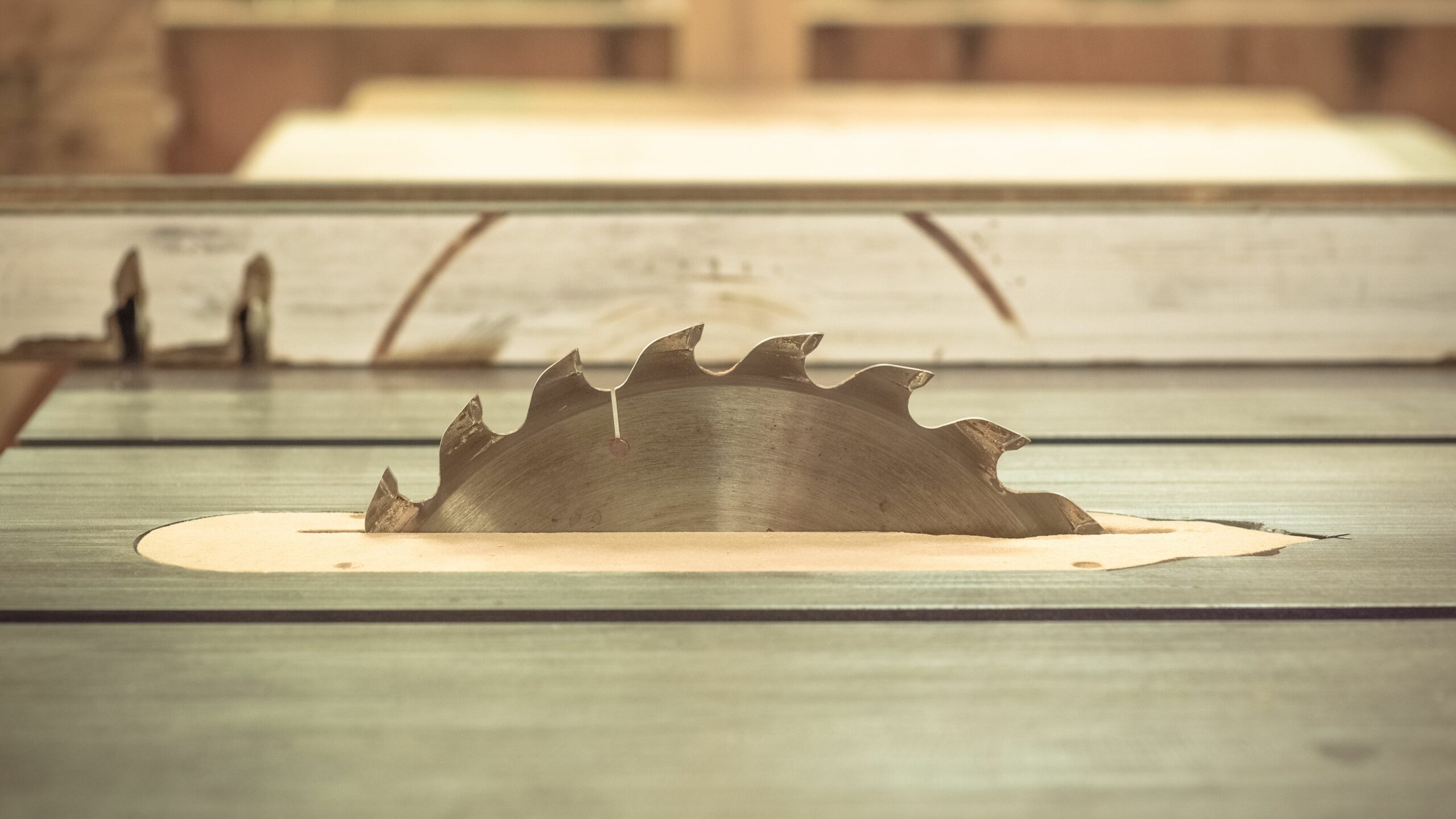
Photo credit: thesprucecrafts.com
Table saws cut lighter loads than cabinet saws due to low horsepower, but they cut faster thanks to a high-speed motor with a riveting knife. This knife also prevents kickback while cutting, preventing injury while maintaining speed. These types of saws are good for simplistic types of cuts that need to be done in quick succession.
The portable build and high-speed cutting of the portable table saw makes it a very versatile unit, good for cutting and ripping on any job site. While not as capable of clean cuts as cabinet saws, the portable table saw makes up for this by being able to do light to medium-duty jobs.
What About Circular Saw?
The circular saw, at first glance, appears to be far superior to the portable table saw in many ways. The circular saw is smaller, making it more compact and portable than the table saw. The circular saw can also be used to cut more materials than a table saw due to being handheld.
Circular saws can be equipped with a variety of blades that can cut anything from plywood to lumber to even concrete. These blades give it an extremely valuable degree of versatility over most tools of the same caliber. That doesn’t mean that the circular saw is the bottom line of power tools for cutting.
Unlike the cabinet saw and portable table saw, the circular saw may struggle to cut consistently straight lines. The handheld nature of the saw leaves the quality of the cuts up to the steadiness, skill, and experience of the user. This means that an experienced craftsman with a circular saw can, theoretically, perform better cuts in more ways than a table saw.
However, the ease of use can make a portable table saw a more intelligent choice when consistency is needed.
Cabinet saws are also a better choice when precision is needed due to the blade being completely static.
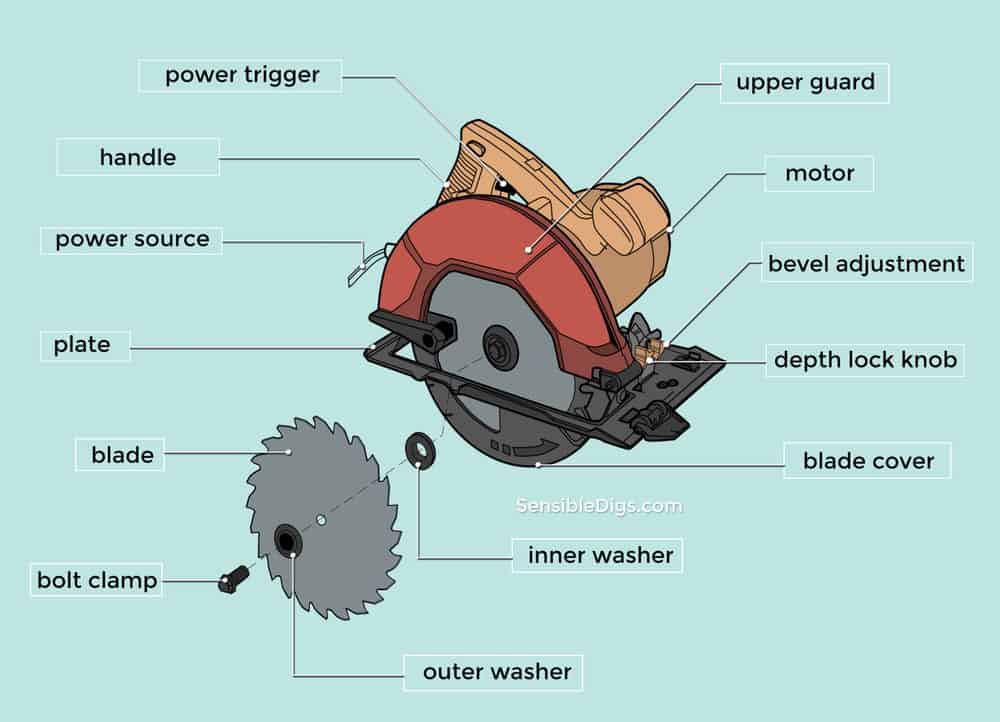
Photo credit: sensibledigs.com
Circular saws must glide along the wood rather than the other way around.
The way that circular saws are used means that binding with a circular saw is marginally less dangerous than a table saw. The marginal safety can be attributed to the trigger mechanism in which circular saws are activated.
The saw will turn off as soon as the trigger is released, in most circumstances.
When and Why Would I Use a Cabinet Saw?
A cabinet saw is typically used when precision or heavy-duty cuts are a requirement. These can range anywhere from your typical carpentry to heavy construction. These saws are not designed to move around and, as such, are best suited to stationary tasks.
Carpentry
A cabinet saw can be used to great skill in the hands of a master carpenter. Despite the sheer power of the unit, cabinet saws are extremely precise and vibrate very little during use. For carpentry, particularly when building furniture, this precision is paramount.
Heavy Construction
For heavy-duty construction jobs that require long-term work, the cabinet saw can be set up. The durability of the unit and the power of the motor enables it to perform myriad jobs on the site, from cutting lumber to cutting metal or tile for installation. Overall, cabinet saws fit the needs of long-term heavy construction.
Workshop
Regardless of your level of professionalism, a cabinet saw is ideal for working indoors due to the quieter motor. The motor is significantly quieter than other types of saws, reducing the risk of hearing damage. Professional woodworkers, carpenters, tilers, and other production or craftsman workshops will find it perfect.
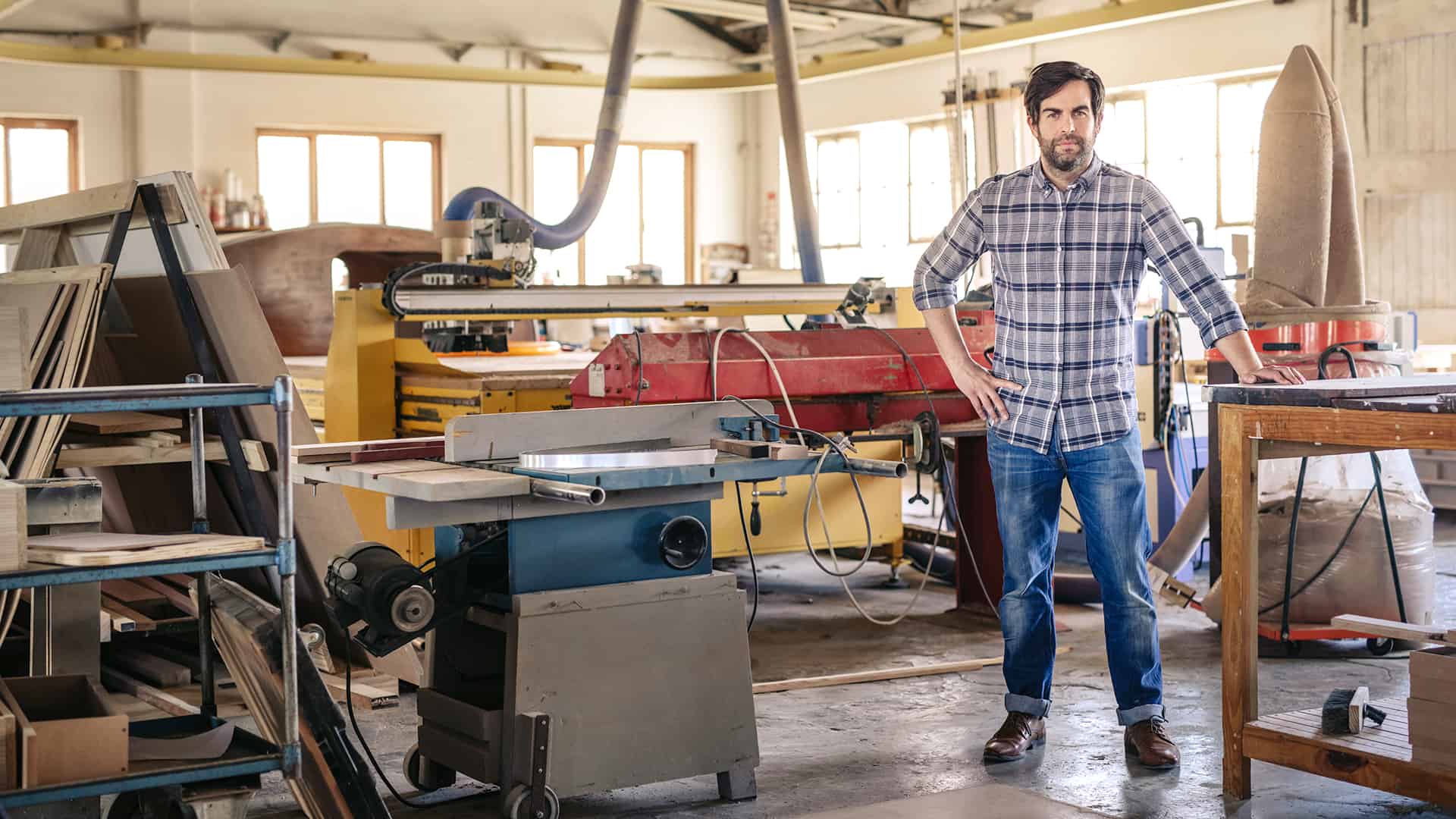
Photo credit: handyman.guide
When and Why Would I Use a Table Saw?
A table saw is best used when portability is paramount. Situations that require portability include professional work such as framing and DIY work. This can also include home improvement.
Framing
Framers are carpenters that build the frameworks for houses. When you work as a framer, you must move from job site to job site relatively consistently. This makes a portable table saw an ideal tool, as it can perform precise cuts without being oversized.
Do-it-yourself Carpentry
For the homebody who wishes to build with their own hands, a portable table saw is a good option. They are usually cheaper than cabinet saws and can be stored easily when not in use. The dust collector also reduces the chance of making a large mess while cutting.
Home Improvement
Whether you’re replacing your floor, fixing your roof, or building an extension onto your house, a portable table saw can make matters easier. Its mobile nature means it can be moved on-site and worked with immediately. Precise cuts with easy access are the basis of the portable table saw.

Bottom Line
When deciding which saw to purchase, the job at hand is your priority. If you’re a professional carpenter working long hours in the workshop, cabinet saws may suit you better. Because of their weight, they aren’t well suited to travel, and their power draw makes them difficult for job sites that require external power sources such as generators.
If you’re a framer or just someone looking to fix things yourself, the portable table saw can be perfect. While it’s louder and vibrates more than the cabinet saw, the lightweight build and small size make it perfect. It’s easy to carry, store, and use.
People Also Ask
Now that you know when to use each of these saws, you may have other questions. We’ll take this moment to try answering some of your more pressing questions. These questions are most often asked about types of saws.
Which Saw is Safer and Beginner Friendly?
Both saws are equally dangerous. That said, the portable table saw is generally more beginner-friendly due to its compact size and weaker motor. The portable table saw’s riveting knife reduces kickback experienced during cutting, increasing its safety.

Photo credit: reviewinfinite.com
How Dangerous Are Table Saws?
Table saws are power tools, which makes them dangerous if misused. Table saws can bind while cutting, which can result in a severe injury as kickback from the bind may launch the material. Beyond this, the blade guard should never be removed to prevent accidents such as loss of digits.
How Accurate is a Table Saw?
The accuracy of a table saw depends on the type used. A portable table saw will tend to vibrate more due to the lightweight, aluminum build. Conversely, cabinet saws will be more accurate and precise due to the weight and heavy-duty motor. Either saw will usually result in a clean, straight cut if you’re experienced.
Is it Safe to Use a Circular Saw as a Table Saw?
The simplest answer to this question is a firm no. Makeshift table saws lack the safety features of a standard table saw, such as kickback paddles or riveting knives. These safety features stop preventable accidents from occurring.
